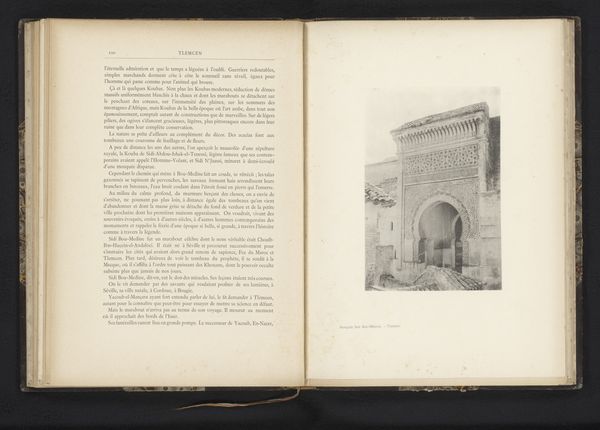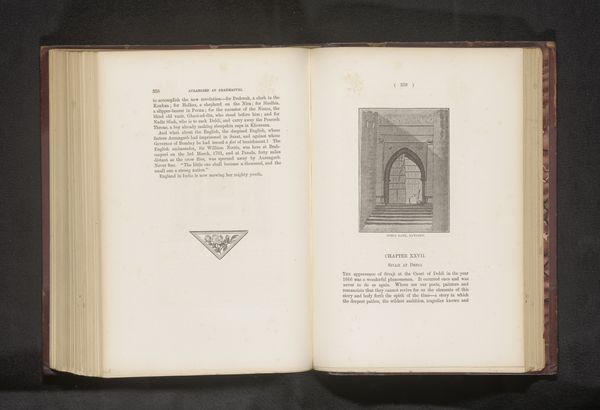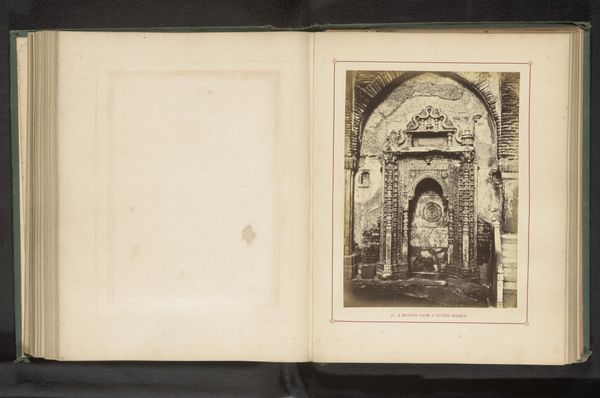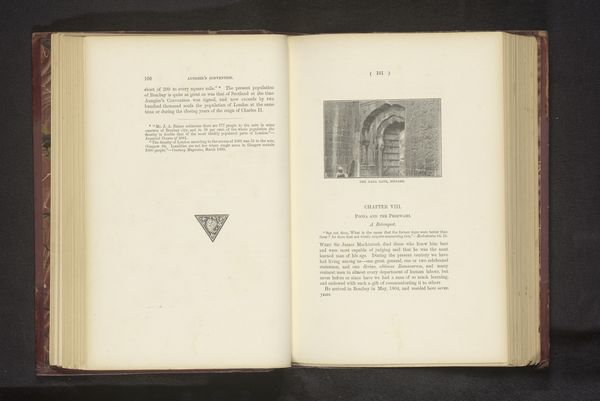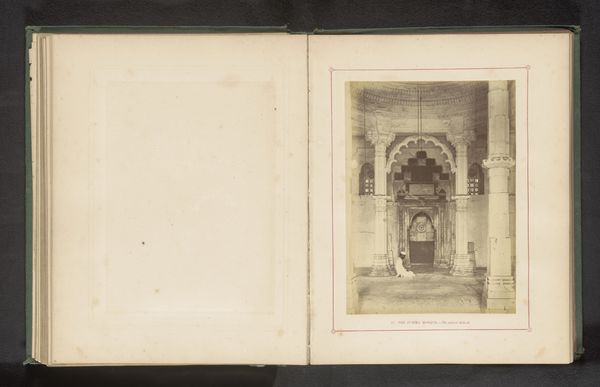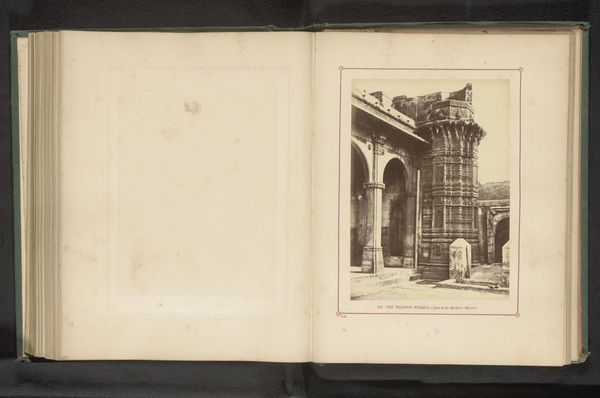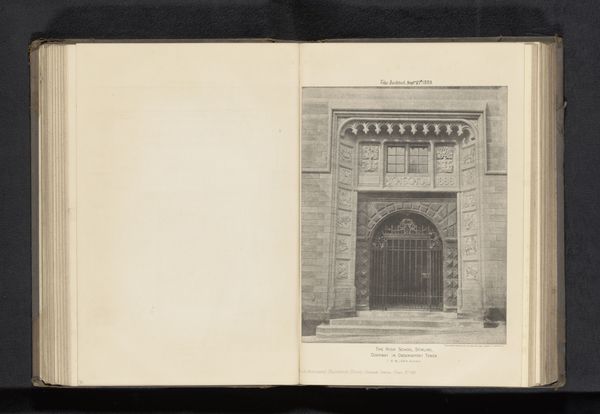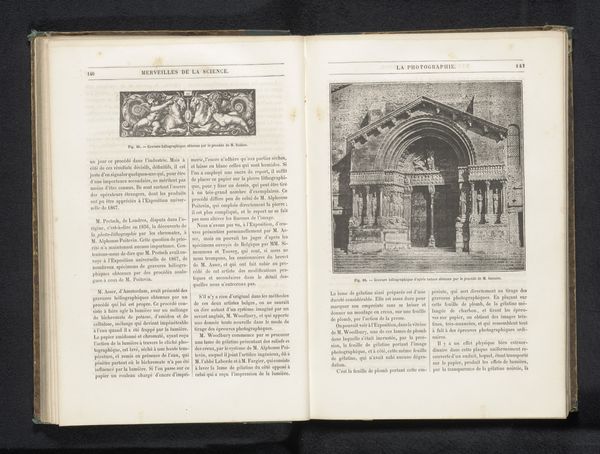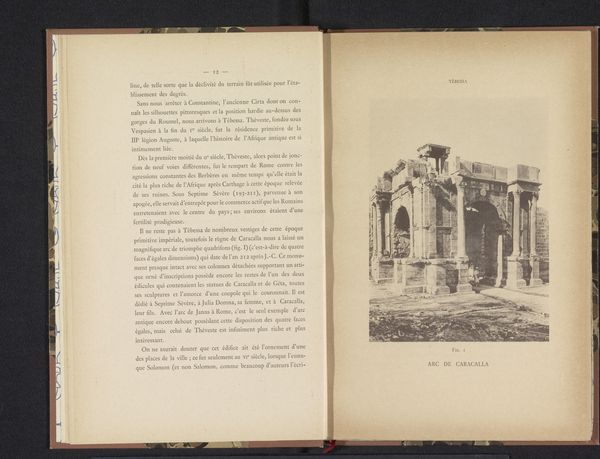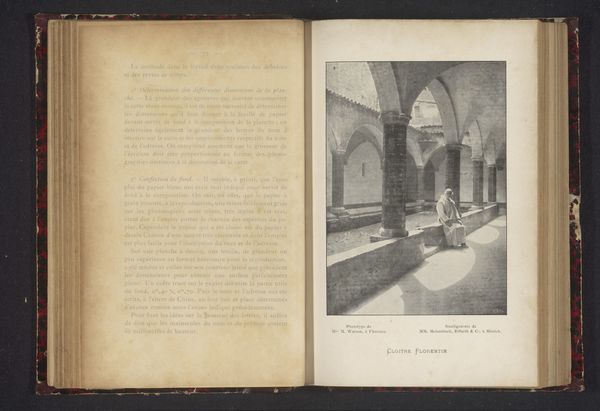
Gezicht op een gang in de Sidi Boumediene moskee in Tlemcen, Algerije before 1893
0:00
0:00
print, photography
# print
#
landscape
#
photography
#
cityscape
#
islamic-art
Dimensions: height 97 mm, width 70 mm
Copyright: Rijks Museum: Open Domain
Editor: Here we have an albumen print before 1893 by Jules Gervais-Courtellemont entitled, "View of a corridor in the Sidi Boumediene mosque in Tlemcen, Algeria." I’m immediately struck by the interplay of light and shadow; it gives the photograph a really tranquil quality. How do you interpret this work? Curator: This photograph, viewed through a historical lens, becomes less about tranquility and more about the power dynamics inherent in early photography of North Africa. Consider the context: this image was created during the height of French colonialism in Algeria. What role does this photograph play in shaping European perceptions of Algerian culture and Islamic architecture? Editor: So you're saying that its purpose might be more about documenting a foreign land than representing a peaceful interior? Curator: Precisely. Early photography was often used as a tool for cataloging and, in a way, possessing the “other.” Think about how images of mosques, like this one, circulated back in Europe. They offered a glimpse into a culture considered exotic, even mysterious, but that gaze was fundamentally shaped by colonial power. Consider the absence of people in the foreground of the corridor. Why do you think that is? Editor: I guess it emphasizes the architecture, and perhaps contributes to the perception of emptiness and, I don't know, maybe even decline? It's interesting how a seemingly simple image can carry so much historical baggage. Curator: Indeed. The choices made in framing, lighting, and subject matter all contribute to a larger narrative about the relationship between the colonizer and the colonized. By understanding this historical context, we can critically assess the power structures at play within this seemingly serene photograph. Editor: Wow, I'll never look at old photographs the same way. It makes you think about whose perspective we are seeing and what agenda might be at play. Curator: Exactly! Thinking critically about the social and political context gives us a much fuller picture.
Comments
No comments
Be the first to comment and join the conversation on the ultimate creative platform.
